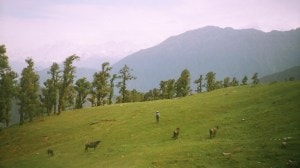Freedom from terror in ‘Veerappan corridors’
If Veerappan in flesh brought shivers and shudders, Veerappan in death called for celebration. Specially for the people and officials in the...

If Veerappan in flesh brought shivers and shudders, Veerappan in death called for celebration. Specially for the people and officials in the ‘‘Veerappan corridors’’.
Whenever the brigand swung by the Nilgiri Hills region, to sneak into the Sathyamangalam forest range, the forest officials were on their toes — trying to keep track of his movements. This meant constant vigil, sleepless nights and, of course, tension.
A.K. Ulaganathan, DFO (Nilgiris North Division), said: ‘‘The forest personnel had to be alert whenever and wherever threats of Veerappan surfaced. Singara, Sigur and Nilgiris East ranges were Veerappan’s corridors.’’
The FDO had set up anti-poaching camps at Mangalapatti, Gandhimattam and Thegumarahada to rein in poaching of elephants and ivory smuggling by Veerappan and his men and others. ‘‘The STF personnel were also patrolling constantly to monitor the brigand’s movements,’’ he said.
Moyar gorge, which comes under the Mudumalai Wildlife Sanctuary warden, was the most threatened. Often, the STF personnel were posted here to prevent Veerappan and his men from hunting wild animals which would stray towards the Moyar river.
‘‘Moyar was a sensitive area and the STF personnel had to be on high alert. Even our own personnel used to sit up and take note of the happenings around,’’ said Mudumalai Wildlife Warden, Asok Upretti.
There were no frequent and direct threats to the Mudumalai Sanctuary. However, after 1995 when tension mounted with the brigand’s gang reaching Bandipur Sanctuary near Mudumalai Sanctuary, officials could not gloss over probable attacks.
Veerappan’s death also comes as a huge relief for tourism in the Nilgiris. So notorious was the brigand that tourists would avoid visiting this spot via Bangalore and Mysore.
- 01
- 02
- 03
- 04
- 05































